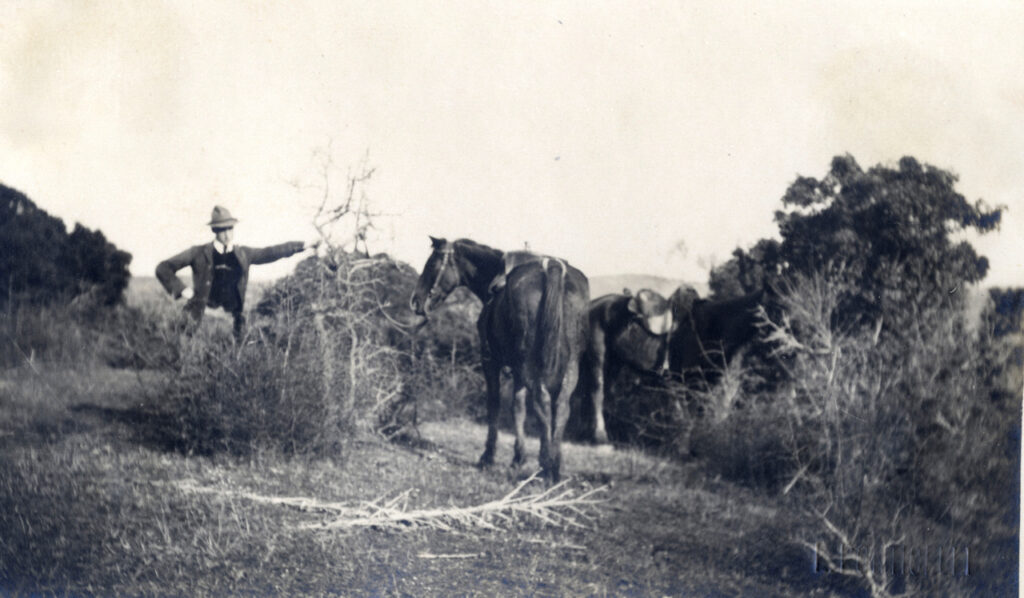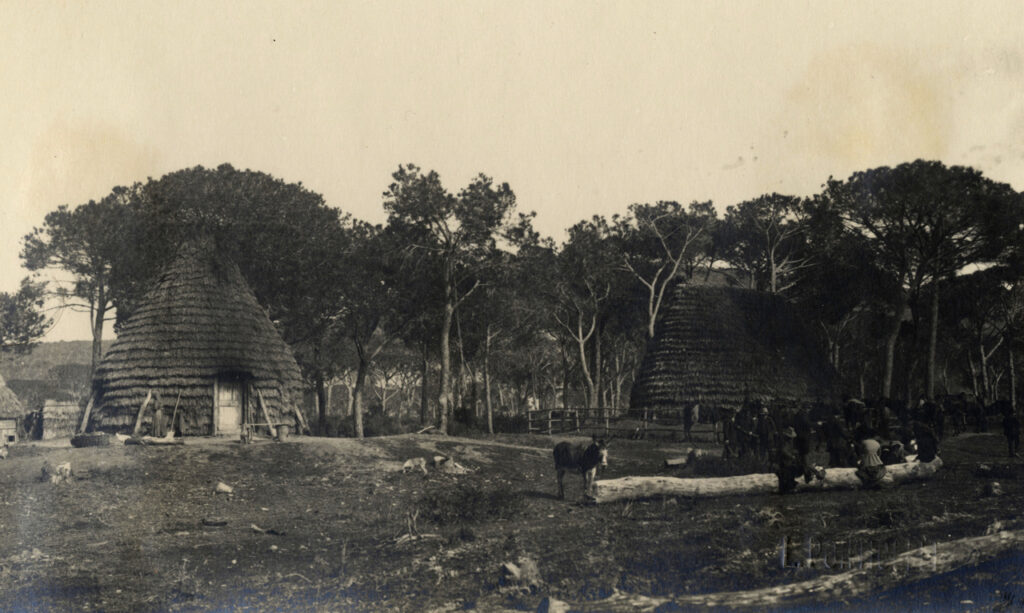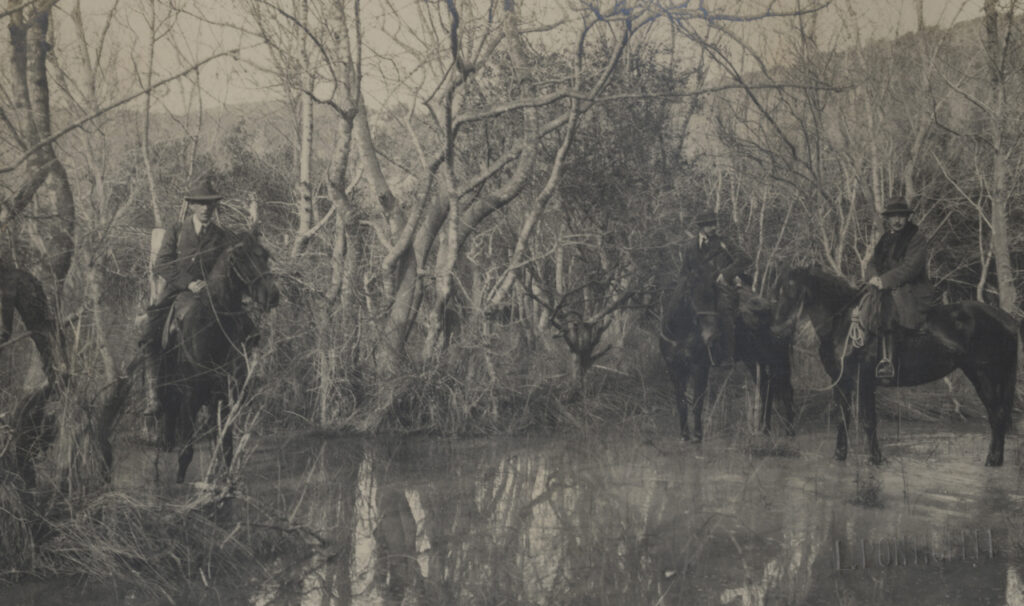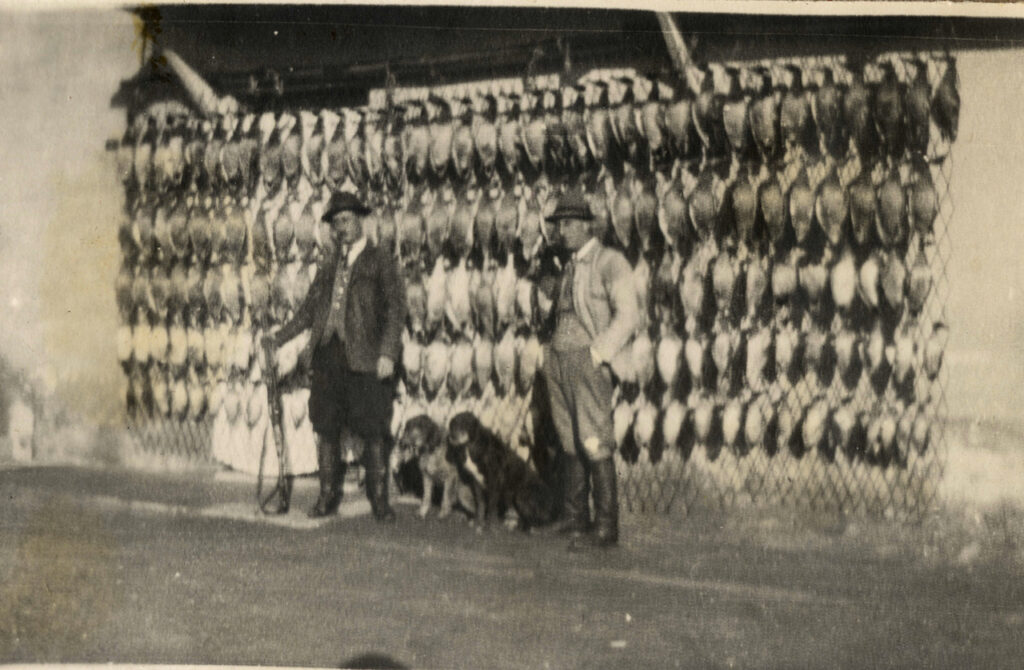The dawn of history
As far as archaeologists have managed to discover, the oldest human presence in the Park territory dates back something like 50,000 years. His traces were found in a cave at the base of the Uccellina hills. Humanity is that of Neanderthals, and the environment is cold and dry, already populated by deer, roe deer and foxes, but still crossed by wild oxen, hyenas and cave lions. We are in the middle of the ice age and the sea is far away, because the level is much lower than today.
That world ends around 11,000 years ago, when the ice age ends and sea levels rise. The Uccellina hills are covered by an uninterrupted blanket of gigantic holm oaks that descends to the seashore. To the north, however, there is a large gulf with shallow waters that reaches the area where the current Grosseto is located.
The landscape remained this way for a long time, until 3000-2300 BC. around, when instead of small bands of Homo sapiens hunters and gatherers, farmers arrived in force, having landed in southern Italy from the Middle East just over four thousand years earlier. But to create cultivated fields and graze domestic animals, the woods must be cut down. To obtain wood for cooking, heating, building houses and fences, and above all producing the coal needed to smelt iron ore – near here there are the largest metal deposits in the Mediterranean – you have to cut down more woods, let them regrow for fifteen or twenty minutes. years and then cut them again. The coppicing system was now born, which is based on the ability of the holm oak to send back new stems from the cut base, and which will last for millennia.
An Italian garden
In the wooded area of the region, increasingly larger open spaces open up, where the erosion of the soil and rocks produces enormous quantities of sediments which the Ombrone river throws into the gulf. Soon, between the northern end of Uccellina and the current Castiglione della Pescaia, sea currents begin to accumulate large sandbars. In the Etruscan era, therefore starting from the eighth century BC, the gulf was now transformed into an immense brackish lagoon which was called “Lake Prile”, overlooked by the centers of Vetulonia and Roselle. In the Park territory, the Etruscans seem to have been present only in Talamone, but their imprint on the region is strong. In southern Etruria, oil and wine are produced which are exported throughout the western Mediterranean by ships that load it in the ports on Lake Prile.
At the beginning of the third century BC, southern Etruria was conquered by the Romans. The Aurelia vetus consular road is built, the great coastal road that passes through Talamone and Alberese, where there are two large rest stations. The population increases rapidly, and the pressure on the forests increases equally rapidly, to the point that perhaps only a few sacred groves remain of the original ones. The coastal plains, where there is the most fertile land and closest to the ports and the Aurelia, are filled with villae, large agricultural companies with servile labor created thanks to the investments of the Roman senators, who had splendid residences built there. Some ruins can still be seen on the southern slopes of Uccellina, near Talamone. Oil and wine are exported to every corner of the empire, fishing is done in Lake Prile which is an exceptionally productive ecosystem, and meat is produced on the prata, large specialized pastures for cattle.
What will one day be called “Maremma” is a thriving region, a densely populated garden. In the meantime, however, the Ombrone continues to bring immense quantities of sediment every year, transforming the shallow waters of Lake Prile into a new plain, which now reaches the northern tip of the Uccellina chain. Here, in the place now called Scoglietto, there is a temple dedicated to Diana, and nearby there is a river port and a bridge over which the Aurelia crosses the Ombrone.
The birth of the “bitter Maremma”
In the third century AD things start to get difficult. In conjunction with a serious economic crisis affecting the entire empire, the climate becomes rainier, thus increasing erosion and the transport of sediments by the Ombrone. Parts of the plain and Lake Prile begin to transform into large freshwater swamps where malaria spreads. There is less and less manpower and fewer resources for the hydraulic arrangements that would allow the swamps to be reclaimed. The villae decreased in number, transforming into large estates that mainly produced cereals. Thus begins the abandonment of the territory and triggers a perverse cycle of swamping, spread of malaria, demographic crisis, poverty, poor maintenance of hydraulic works, new swamping. The arrival of the waves of Gothic and Visigothic barbarians, the pirate incursions of the Vandals and the Greco-Gothic war worsen the situation. The sixth century, in a now Christianized region, sees the end of ancient landscapes.
The remaining population abandons the coast and takes refuge on the hills inland, where in the meantime the woods have grown back. What was a garden first of the Etruscans and then of the Romans becomes an almost impassable area, which between the seventh and ninth centuries leaves almost no archaeological evidence: as if its populations disappeared without a trace.
Here Charlemagne created the Maritima Regio region, from which the name “Maremma” was born, and entrusted it to the Aldobrandeschi, who dominated it until the fourteenth century. While inland Tuscany is becoming the new hub of Italian and European civilization, the Maremma coast remains excluded and isolated, destined for a long-term depression.
However, the woods have grown back and the immense malarial plains, deadly to humans, are very rich in wild life, because the swamps are among the most productive ecosystems on the planet.
However, after the year 1000, the area of the current Park experienced a period of recovery. The territory produces important resources: coal from the woods, salt from the salt pans at Bocca d’Ombrone, fishing from Talamone. To control them, and reaffirm the power of the Church with respect to the aims of Siena and the Aldobrandeschi, around 1100 the Pope founded the Abbey of San Rabano on the heights of Uccellina, which would bring new life there for a couple of centuries. The abbey administers the economic exploitation of the surrounding territory, controls the small port of Cala di Forno where goods and people are embarked, and brings back a minimum of civilization and culture. However, the Black Death of the mid-fourteenth century put an end to all this, the Abbey of San Rabano was abandoned and shortly thereafter the Maremma fell into the hands of Siena.
Colonial exploitation
Siena organized a system of exploitation of the vast and depopulated Maremma territories that would last for centuries. Starting from the mid-fourteenth century, the region became an immense pasture for sheep who came down from the Apennines and Amiata along the transhumance routes in September, to leave before the start of summer, when the danger of malaria returned . In 1419 the Customs of the Paschi was established, which allowed every shepherd to cover any territory of the Maremma, to whomever he belonged, in exchange for a rent proportional to the number of his sheep. The money, naturally, is for the city of Siena, and the production of cereals, the exploitation of the forests and that of hunting and fishing resources, which are brought to the city markets, are organized in a similar way. In practice it is a sort of colonial exploitation, which leads to the complete abandonment of very vast areas: in the mid-fifteenth century the Maremma probably reached its demographic minimum.
Little changes when the Maremma passes from the dominion of Siena to that of Florence. The Doctors begin to take an interest in swamp reclamation projects, but they limit themselves to small impromptu interventions that do not change the situation. Landowners are reluctant to invest in long and expensive reclamation works, and prefer to continue to receive the parasitic income from the large estates and marshes. The Medici themselves derived a third of the family income from the monopoly of fishing in Lake Castiglione della Pescaia – what remains of Lake Prile – a malarial swamp of fifty square kilometers which in summer turns into an “immense and deadly swamp”.
Starting from the sixteenth century, the incursions of the Barbary pirates became particularly intense on the coast, and the Medici were forced to invest in the construction or renovation of a system of watchtowers, ten of which are still found in the Park territory.
Until the end of the eighteenth century, with the exception of Grosseto, Pitigliano and a few castles on the Amiata, the Maremma had practically no inhabited centers or roads. From autumn to spring it is inhabited by woodcutters, charcoal burners and very poor shepherds who rebuild their mud and reed huts every year. In the summer, the Grosseto administration, together with the inhabitants who have the possibility to do so, also moves to the hills in Scansano. This habit, the so-called “estatatura”, continued until the early twentieth century.
Things only begin to change with the arrival of the Lorraine dynasty.
The redemption of the Maremma
The new grand dukes of Tuscany are the first in centuries to no longer consider the Maremma a land to be robbed, but even a “sick daughter” to whom special attention should be paid. Pietro Leopoldo begins with the project to reclaim Lake Castiglione. The attempt fails, but the problem of the development of the Maremma is addressed in a systematic way for the first time, not only with hydraulic solutions but also with profound economic, social and political reforms that begin to produce the first fruits. However, Leopold II managed to carry out the first major reclamations in the first decades of the nineteenth century. With the help of the brilliant hydraulic engineer Alessandro Manetti, the Grand Duke began the reclamation of Lake Castiglione “by filling”, that is, digging canals to bring the floods of the Ombrone full of sediments there, so that they could fill it. It is a colossal operation, which between 1820 and 1859 allows the recovery of over 9000 hectares of land. Even the Alberese marshes, periodically flooded by the Ombrone floods, are partially dried, and roads and farms are built throughout the Maremma. It is in this period that the Lorenas had the gigantic pine forests that still characterize it planted along the coast, including the one found today in the Park, between the Uccellina and Ombrone hills.
After the Unification, the new Italian state was not interested in the Maremma. Only in the Alberese estate, therefore in the territory of the current Park, did Ferdinando di Lorena continue his work. He digs new drainage channels for the water, brings back the cultivation of vines and olive trees, and builds Spergolaia, a model agricultural company equipped with barns, sheds, rational stables, homes for the workers and an enormous granary, as well as the most modern agricultural machinery.
Between the nineteenth and twentieth centuries this part of Maremma began to change, but it is still a paradise for hunters, who can now arrive with the new Livorno-Chiarone railway. The entire highest part of the Uccellina hills is reserved for them, with a very long wall (still existing, although partially in ruins) that divides the agricultural part from the scrub. However, hunting is very rich everywhere, because much of the natural environment is still intact: a single uninterrupted marshy forest still extends from the Tenuta dell’Alberese to Grosseto.
The outbreak of the First World War put an end to the works, which resumed in 1928, under fascism. The completion of the “complete reclamation” is entrusted to the Opera Nazionale Combattenti, to which the State entrusts the estate expropriated from the Lorenas. Thanks to the availability of now motorized vehicles, the Opera has a dense network of drainage channels dug and uses large water pumps to accelerate the drying of the land. The large oaks of the plain are cut down, even using explosives to eliminate their roots. Roads, farmhouses and the small center of Alberese were built, where 117 families from Veneto and Friuli were transferred. The large Uccellina hunting reserve, however, is not touched.
The redemption of the Maremma, however, is completed only after the end of World War II, whith the final elimination of malaria and the distribution of land to the settlers, in a territory that is now almost artificial, kept dry by a dense network of canals and works that require continuous maintenance.
Towards the Park and the future
After centuries of abandonment, in the 1960s the Maremma coast was rapidly repopulated thanks to seaside tourism. In Ansedonia, Argentario, Principina, Marina di Grosseto, Castiglione della Pescaia, hotels, second homes and residential complexes are built where tens of thousands of holidaymakers flock in the summer. But we are already starting to look nostalgically at the recently disappeared Maremma, which survives on the Uccellina chain and partly in the large plain near the mouth of the Ombrone. Someone sees in it a new speculative opportunity, and plans the construction of a tourist and residential complex for 13,000 people in Rispescia. Someone else, however, looked with different eyes at the last strip of Maremma territory still in natural conditions, and in 1965 the first law proposal for the establishment of a national park was presented. Ten years of heated discussions followed, which saw the political forces of the time lined up on opposite sides. Just north of Talamone and near Bocca d’Ombrone, the first houses and roads had already been built, when in 1975 the Tuscany Region decided to protect what remains of the nature of the past with the creation of its first regional park, the second in Italy.
The establishment of the Maremma Regional Park marks the end of hunting, but also the control of poaching, environmental restoration in areas already compromised, the opening of visit itineraries, scientific research. With the exception of daily visitors, for the first time in centuries the territory is almost completely emptied of any human presence, and the natural environment – with the help of careful management interventions – begins to repair the wounds inflicted by history.
Today the park environment is starting to walk on its own two feet again. The return of the wolf confirms the first results of a renaturalization that will last for a long time to come, and which will perhaps bring this corner of Tuscany back to something similar to what the first farmers found three thousand years ago. But the Park already offers those who visit it the spectacle of a Mediterranean nature that has disappeared elsewhere, the possibility of imagining its past and the possibility of hoping for a better future. A future in which the fortunes of men will not be at the expense of that of nature, nor vice versa.
WHAT TO KNOW
The Abbey of San Rabano





